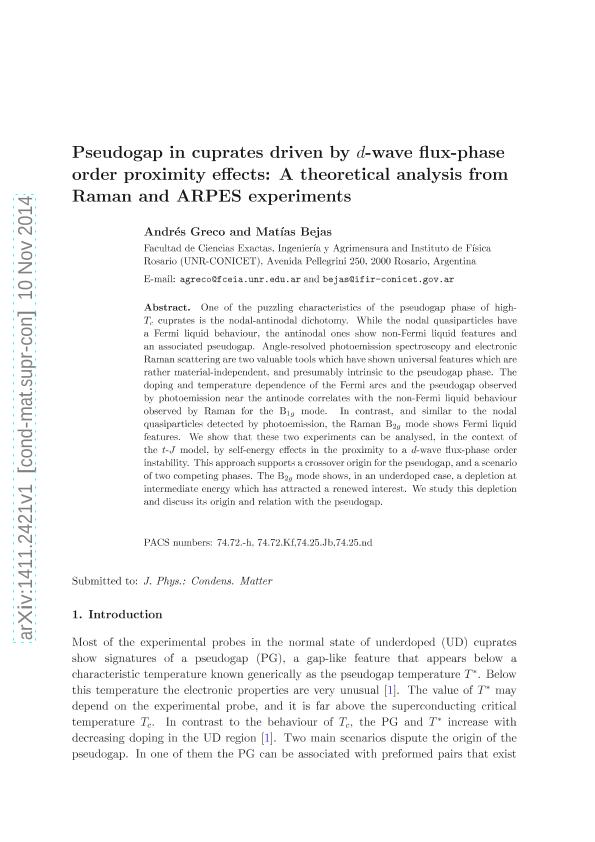Artículo
Pseudogap in cuprates driven by d-wave flux-phase order proximity effects: A theoretical analysis from Raman and ARPES experiments
Fecha de publicación:
10/2014
Editorial:
IOP Publishing
Revista:
Journal Of Physics: Condensed Matter
ISSN:
0953-8984
Idioma:
Inglés
Tipo de recurso:
Artículo publicado
Clasificación temática:
Resumen
One of the puzzling characteristics of the pseudogap phase of high-Tc cuprates is the nodal-antinodal dichotomy. While the nodal quasiparticles have a Fermi liquid behaviour, the antinodal ones show non-Fermi liquid features and an associated pseudogap. Angle-resolved photoemission spectroscopy and electronic Raman scattering are two valuable tools which have shown universal features which are rather material-independent, and presumably intrinsic to the pseudogap phase. The doping and temperature dependence of the Fermi arcs and the pseudogap observed by photoemission near the antinode correlates with the non-Fermi liquid behaviour observed by Raman for the B1g mode. On the other hand, similar to the nodal quasiparticles detected by photoemission, the Raman B2g mode shows Fermi liquid features. We show that these two experiments can be discussed, in the context of the t-J model, by self-energy effects in the proximity to a d-wave flux-phase order instability. This approach supports a crossover origin for the pseudogap, and a scenario of two competing phases. The B2g mode shows in underdoped a depletion at intermediate energy which has gained a renewed interest. We study this depletion and discuss its origin and relation with the pseudogap.
Palabras clave:
Cuprate Superconductors
,
Pseudogap
,
Photoemission
,
Raman Spectroscopy
Archivos asociados
Licencia
Identificadores
Colecciones
Articulos(CCT - ROSARIO)
Articulos de CTRO.CIENTIFICO TECNOL.CONICET - ROSARIO
Articulos de CTRO.CIENTIFICO TECNOL.CONICET - ROSARIO
Articulos(IFIR)
Articulos de INST.DE FISICA DE ROSARIO (I)
Articulos de INST.DE FISICA DE ROSARIO (I)
Citación
Bejas, Matias Hector; Greco, Andres Francisco; Pseudogap in cuprates driven by d-wave flux-phase order proximity effects: A theoretical analysis from Raman and ARPES experiments; IOP Publishing; Journal Of Physics: Condensed Matter; 26; 48; 10-2014; 485701-485701
Compartir
Altmétricas




